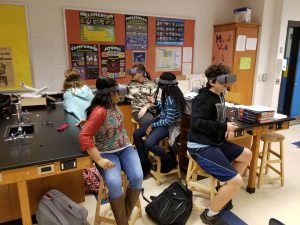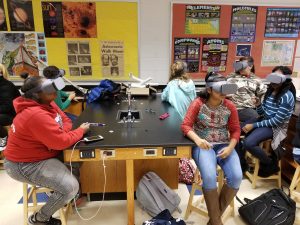Thoughts on Playtest 3
We were extremely happy with our last playtest. A lot of our changes paid off and vastly improved our experience. First of all, the communication and collaboration between teams was way better. The smaller team sizes made it easier for everyone to be heard and voice their thoughts. Also, because of the flag limitations, particularly fast students would be heard helping other students as opposed to just solving everything on their own. Every student found at least one object correlating to their scavenger hunt. There were many points during the playtest that we heard students say things like, “you go and find the bear, and I’ll find the wolf,” or “come over here! I think I found the purple milkweed.” One girl at the end of the playtest said, “It’s more fun that we got to talk to each other and help each other.”


There was still one team that didn’t finish their scavenger hunt, but they were just missing a single clue. One girl in that group said she actually knew what the answer to that question was, but the phone heated up (it heats up much faster with our additional season in place), and she was required to shut it off. We’ve tried to optimize to prevent this since the playtest.
We developed a replay system to track the students path through their time in the experience. This was particularly interesting to watch. It became very apparent that the students prefered to group with their friends in the virtual environment as opposed to split up. That being said, the individual teams seem to spread out and explore different areas more than stick together as one unit.
We also developed a few new interesting analytics. We measured how long people were reading the blurbs for, how long people stayed in certain areas of the map, and how long they spent in those areas.
The amount of time that blurbs were opened is a little misleading, but totally makes sense. It may not be that the students loved reading about the Birch, Maple, and Oak tree as much as they were trying to click on other things and accidentally clicked on the trees surrounding them. What is interesting is that the Lilac, Deer, and Red-Shouldered Hawk seem to be some of the most interesting objects to the students.

It was interesting to see how long and how many times students visited certain teleportation points. What we learned is that the “fork in the road” (the teleportation point closest to the middle of our experience that connects to all surrounding areas) was the most visited area. Next were teleportation points closer to the center, and the least visited were those at the edges of the experience. This makes perfect logical sense. What we were proud of is seeing how often people spent on certain points. We intended three areas to draw the most attention: in the cave, by the lake, and in the tree, and our data shows that it worked. The three highest times spent are all on those points.


Until Next Time.
